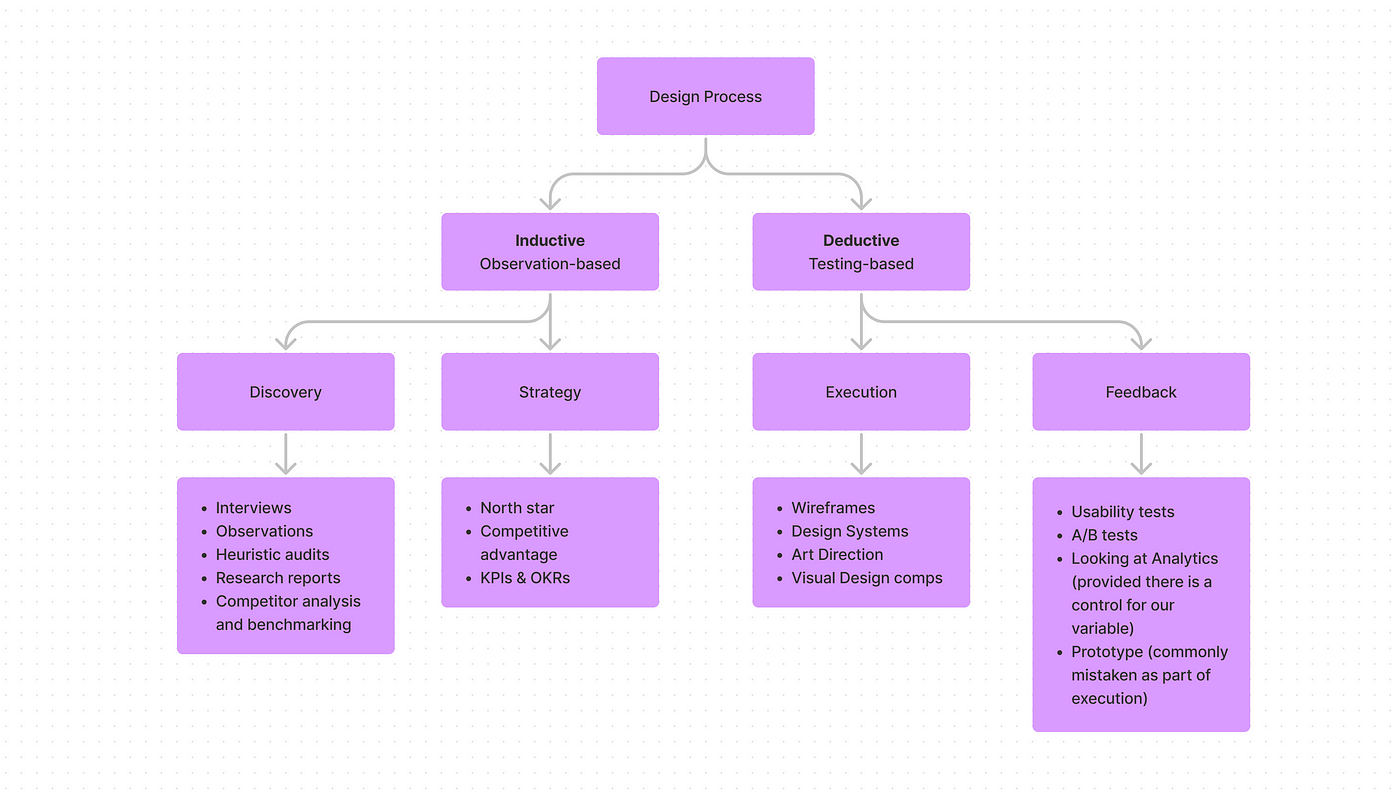Modular Design Process: A Brief Intro
A reference template for building a scalable design process through swappable modules.

This post is a work-in-progress and I’ll be updating it as I further develop these ideas. Feel free to leave your thoughts in the comments.
Product design alternates between two types of reasoning to reduce uncertainty. These are inductive and deductive reasoning.
Each of these types of reasoning come with a series of activities to gather information and break down unknowns.
Inductive reasoning
It starts with a series of observations to form a hypothesis. Is better suited for the early stages of the process.
The inductive reasoning phase has to steps, Discovery and Strategy:
Discovery
Encompasses a number of activities carried out with different stakeholders to help us understand a situation and define a problem that’s worth solving.
These include but are not limited to:
- Interviews
- Observations
- Heuristic audits
- Research reports
- Competitor analysis and benchmarking
Strategy
Strategy is the process of defining the product or feature’s north star based on the observations of the discovery stage. The main goal is to balance the interests of all stakeholders.
- “Design Strategy is the intersection between business profitability and value for people.”
The outcome of strategy should be a clear criteria for prioritization and measurement.
- North star
- Competitive advantage
- KPIs & OKRs
Read more: How to Define Your Design Strategy
Deductive reasoning
It starts with a hypothesis —usually created out of observations during the inductive reasoning phase— and proceeds to create an experiment to test its validity. It’s most useful in the later stages of the process.
The two steps of the deductive reasoning phase are Execution and Feedback.
Execution
Is the step most commonly associated with design. It includes all the activities whose output are visual deliverables. These include but are not limited to:
- Wireframes
- Design Systems
- Art Direction
- Visual Design comps
Feedback
The last step of the process focuses on testing the hypothesis formed during the inductive reasoning phase. It involves running an experiment that would allow us gather evidence to validate or invalidate our assumptions.
Keep in mind the design of the experiment is just as important as the decision of what to test.
The most common activities during the Feedback step are:
- Usability tests
- A/B tests
- Looking at Analytics (provided there is a control for our variable)
- Prototype (commonly mistaken as part of execution)
This is by no means an exhaustive list of design deliverables and activities. It’s meant to be a first draft for the process.